- News
- Reviews
- Bikes
- Components
- Bar tape & grips
- Bottom brackets
- Brake & gear cables
- Brake & STI levers
- Brake pads & spares
- Brakes
- Cassettes & freewheels
- Chains
- Chainsets & chainrings
- Derailleurs - front
- Derailleurs - rear
- Forks
- Gear levers & shifters
- Groupsets
- Handlebars & extensions
- Headsets
- Hubs
- Inner tubes
- Pedals
- Quick releases & skewers
- Saddles
- Seatposts
- Stems
- Wheels
- Tyres
- Tubeless valves
- Accessories
- Accessories - misc
- Computer mounts
- Bags
- Bar ends
- Bike bags & cases
- Bottle cages
- Bottles
- Cameras
- Car racks
- Child seats
- Computers
- Glasses
- GPS units
- Helmets
- Lights - front
- Lights - rear
- Lights - sets
- Locks
- Mirrors
- Mudguards
- Racks
- Pumps & CO2 inflators
- Puncture kits
- Reflectives
- Smart watches
- Stands and racks
- Trailers
- Clothing
- Health, fitness and nutrition
- Tools and workshop
- Miscellaneous
- Buyers Guides
- Features
- Forum
- Recommends
- Podcast
£1,604.00
VERDICT:
A quick bike for long distance rides, as long as you're a fan of the firm ride
Weight:
8,640g
Contact:
At road.cc every product is thoroughly tested for as long as it takes to get a proper insight into how well it works. Our reviewers are experienced cyclists that we trust to be objective. While we strive to ensure that opinions expressed are backed up by facts, reviews are by their nature an informed opinion, not a definitive verdict. We don't intentionally try to break anything (except locks) but we do try to look for weak points in any design. The overall score is not just an average of the other scores: it reflects both a product's function and value – with value determined by how a product compares with items of similar spec, quality, and price.
What the road.cc scores meanGood scores are more common than bad, because fortunately good products are more common than bad.
- Exceptional
- Excellent
- Very Good
- Good
- Quite good
- Average
- Not so good
- Poor
- Bad
- Appalling
The rim-braked Sportive Racing model has been in Ribble's line-up for a while, but the new Sportive Racing Disc gives you even more options if you're after a quick mile-muncher for those long summer jaunts or a year-round commuter. Not only do you get disc brakes, you also have the option of fitting full mudguards and larger 28mm tyres, though our test bike came with 25s; 28mm tyres might help tame the firm ride.
- Pros: Clearance for 28mm tyres and full length mudguards
- Cons: A firm ride for a sportive-monickered bike
Just over a year ago I tested the Ribble Sportive Racing Special Edition and pretty much everything I said there stands for this disc version, because it is virtually the same frame.
There have been some tweaks to the rear triangle to accommodate the wider hub spacing and brake callipers, but little else. Well, apart from the 12mm thru-axle, a now near-industry standard for frames running disc brakes.
The fork is brand new with larger legs in terms of their cross sectional area to resist the braking forces, plus it uses a thru-axle and has internal routing for the brake cable or, in this case, hydraulic hosing.
The ride
The biggest issue I had with the Sportive Racing, and it's a pretty fundamental one, was the ride quality; it was just too firm for the style of riding intended. And I have to say, little has changed with this new model. A bike with Sportive in the name is presumably intended to cover big miles, and after rides of three to four hours I really knew I'd been on the Ribble. There doesn't seem to be much compliance manufactured into the frame or fork through the design and carbon fibre layup.
It's not just the big hits that can take their toll on your contact points, but that constant buzz from poor road surfaces just tapping away at the nerves and muscles in your arms and wrists; it can be quite a fatiguing bike to ride, especially on unknown roads.
It is fast, though. With this much stiffness you certainly don't suffer any feeling of power loss at the bottom bracket when you really want to get a shift on, whether that's accelerating hard or monstering the bike up one of those short, sharp power climbs.
Press-fit bottom brackets are quickly going out of favour thanks to creaking and movement issues, but they do create a wider and larger bottom bracket shell to fit the oversize diameter down tube and chunky chainstays into.
The Ribble seems to belie its 8.64kg weight too, feeling much lighter than that, especially once you've got it moving. Changing pace to deal with traffic, conditions or other riders around you is easy and smooth.
Up front the head tube, as you'd expect, is tapered, with the bottom diameter being larger than the top. This in turn allows for a larger diameter fork steerer and crown for increased stiffness under braking and steering loads. You certainly notice this on technical descents where you are braking hard into a tight bend.
The fork works well too with its larger, stiffer legs giving an ever-so-slightly sharper turn in than the rim brake-equipped bike.
This Disc model still suffers from the same handling issues as I mentioned in the rim brake version's review, though. The stiff frame mutes any delicate feedback from tyres to rider, making it difficult to put in little adjustments to your body position or braking to tweak your line mid-bend.
It's still a decent enough descender, but you just have to work a little bit harder to keep it flowing through the corners, with the frame and fork bouncing about over small road imperfections and the like. There is a lot of clutter in the feedback and having to decipher it feels like you are on a small time delay, so you just miss the entry to the apex, for example.
With a tall 176mm head tube on this medium size you are quite high up at the front, which means you can't quite stretch your body out to get a low centre of gravity to help flick the bike from side to side.
I'm not trying to make out that the Ribble has an uncomfortable or bad frameset, in fact when you put everything together it is a decent performer. It's just that it's a bit on the aggressive, stiff side for the style of bike.
The frame has some pretty racy geometry, with steepish angles at the head (73 degrees) and seat (73.5 degrees), but with a stack of 585mm and reach of 385mm you get a ratio that sits somewhere between an endurance bike and a race steed, exactly as the Sportive Racing name would have you expect.
The frame
The frame itself is made up of a mixture of Toray's T700 and T800 grade carbon fibres and it looks good to the eye. Obviously under a layer of paint it's difficult to see imperfections, but there was nothing I could feel or hear that would suggest anything other than this being a good frame.
It's followed the latest trend of flat mount brake callipers for the discs, and as I mentioned earlier you get thru-axles at both ends which is a neat touch as they resist the twisting forces under really heavy braking, especially at the fork.
You also get internal cable routing with a removable cover under the bottom bracket for access, which keeps road spray and gunk away from the cables, plus there are entry and exit ports for electronic groupsets.
There is also a full complement of bosses for fitting full length mudguards, although these aren't found in the usual position at the dropouts, so there might be a little bit of fiddling and fettling when it comes to fitting more traditional guards.
This Disc model being able to take 28mm tyres is another plus, because that is one way you can go to reducing the harshness of the frame by running lower pressures. Another place would be to use a shim to drop the 31.6mm diameter seatpost down to a 27.2mm for a little added flex.
Spec as you like
The great thing about buying a Ribble is the sheer number of options available to you thanks to its Bikebuilder. You can choose from entry-level, which could be a £1,280 Tiagra Hydro build with the same wheels as this one and entry-level Deda components, not bad for the money, or if you really want to go custom you can enter the Advanced Bikebuilder and the world is your oyster.
Ribble always offers a 'recommended build', a specification that sits about right with the frame level and offers a good value for money build, and that's what we've got here. For your £1,604 you get a full Shimano 105 Hydro groupset, Fulcrum Racing Sport DB wheels and mid-range Deda finishing kit.
Shimano's 105 is a great groupset pretty much appearing on the majority of bikes at this price point. The shifting is slick even under load and it's tough as old boots. For an in-depth look you can read our review of the mechanical version here. Our setup came with a compact 50/34t chainset and an 11-28t 11-speed cassette, offering a pretty decent spread of gears for most occasions. This is something you can obviously tweak at the point of sale, though.
On the hydraulic side of things, the RS505 shifters don't have the same defined click as their mechanical cousins when it comes to the gear changing, plus I don't find their shape as comfortable to use.
The braking was pretty good though, using the 140mm rotors front and rear with the BR-RS505 callipers, especially once everything had bedded in. They certainly aren't the best or most powerful brakes I've used, but they are consistent.
Fulcrum's Racing Sport DB wheelset is seen on quite a lot of bikes at this price point and I've always found them to be a solid, dependable set of hoops. They aren't the lightest but are absolutely fine when it comes to spinning up to speed. I can't really see any reason to upgrade them unless you spend a lot of time in the hills.
They're shod with a pair of Continental Ultra Sport wire bead tyres, so you could definitely shave some weight there, but again, these are good performers with plenty of grip and puncture resistance. Rolling resistance felt fine as well.
Up front, the cockpit comes from Deda, its Zero 100 bar and stem, and they bring a touch of class to the bike as the Italian brand manages to make even its cheapest kit look decent with smart branding and logos. You can also pick and choose your stem and bar length.
The Selle Italia X1 Flow saddle sits atop a Superleggera carbon seatpost and it's a reasonable seat for not much money, even if it does take a bit of bedding in to soften it up a bit.
Value
When it comes to value the Ribble is playing quite a hand. For instance, Canyon's closest model, the Endurace CF SL Disc 7.0, comes in at £1,799 excluding P&P for a very similar build. The Endurace is renowned for its excellent ride and handling, plus it is a little more aggressive than the Ribble so that could swing it for you.
> Buyer's Guide: 12 of the best road bikes from £1,500 to £2,000
Or what about a Giant? This Defy Advanced 3, for example, that Mat tested a while back, is heavier at 9.5kg and has Tiagra for its £1,549 price tag, but again it also has a very nice ride quality.
And that, really, is what it will come down to. The deciding factor on whether you plump for the Ribble Sportive Racing Disc or not: how appealing is that firm ride quality to you?
Verdict
A quick bike for long distance rides, as long as you're a fan of the firm ride
road.cc test report
Make and model: Ribble Sportive Racing Disc
Size tested: Medium
About the bike
State the frame and fork material and method of construction. List the components used to build up the bike.
Sportive Racing Disc Carbon Road Frame Yellow
Sportive Racing Disc Carbon Road Fork
105 Black (5800) 11Spd Rear Gear Short (SS)
11 Spd 105 5800 Cassette 11-28
Lyra 6-Bolt Disc Brake Rotor 140mm
105 Black (5800) 11Spd Front Braze-on
RS505 Hydraulic Disc Brake with RS505 calipers + Mech Shifting Levers
5800 (HG600 105 Chain) - 11 Speed
Ultra Sport 2 Rigid Tyre
Cork Ribbon Handlebar Tape
Zero 100 (31.7) Bars
Zero 100 Performance (31.7) Stem
Superleggera Alloy Seatpillar
X1 Flow Saddle
Tell us what the bike is for
Ribble says, "The Sportive Racing Disc has the same frame triangle up front as the regular Sportive Racing, but the rear triangle and fork have been reworked and now have mudguard eyelets and clearance for 28mm tyres, further increasing the bike's versatility and perfect for adding a bit more comfort or tackling slightly rougher terrain like cobbles.
The Sportive Racing Disc – with it's 'bumble bee' colour scheme - perfectly combines comfort and tenacity. It has balanced design elements for sportive and endurance riding and racing with a taller head tube for longer rides and a race-orientated rear triangle. Riders are thrilled with how the Sportive Racing bikes handle – it offers a responsive, fast, well positioned and comfortable ride.
It features new tubing profiles - to increase stiffness where you need it - using Toray's top T700/T800 carbon fibre to work in unison with the tapered head tube and carbon fork steerer. The bottom bracket is a press fit design which increases the power transfer from pedals to rear wheel.
Naturally, the frame is Di2 and electronic groupset ready and has internal cable routing. At the back of the frame the larger wishbone seat stay increases the responsiveness and stiffness of the frame making the bike accelerate as soon as you get out of the saddle.
Disc brakes on road bikes have come a long way and the big boys - Shimano and SRAM - have got it right with the very latest flat mount design calipers. The disc calipers are now the same size as rim brake calipers and so very similar in weight. The front disc caliper fits snugly behind the fork blade and the rear fits on top of the chainstay giving the bike a really clean look. If you are buying a disc road bike it has to have 'Flat Mount'. Along with the flat mount disc the Sportive Racing Disc comes with 12mm front and rear through axles and a really nice way to keep your bum dry...
If you want to fit (and remove) mudguards this frame has a really nice design feature so you can fit mudguards – the dropout takes two bosses that can have mudguard eyes screwed into the frame - and this great feature changes the bike into an ideal winter training bike or commuter.
Also available in stealth black or racing green with rim brakes, the Sportive Racing Disc is one of the flagship disc brake bikes in a new generation of Ribble bikes – this bike is the future and you can experience this new technology now and stay ahead of the rest of the pack."
I think the RIbble is a good all-rounder, but with a frame that is too firm for the style of riding it is intended for.
Frame and fork
Overall rating for frame and fork
8/10
Tell us about the build quality and finish of the frame and fork?
The build quality looks to be decent and so does the paint finish.
Tell us about the materials used in the frame and fork?
Toray T700 and T800 grade carbon fibre is used in the construction, with the fork also having a carbon steerer.
Tell us about the geometry of the frame and fork?
It has quite a tall front end, but thanks to a decent length top tube it is still reasonably racy. Full details here - https://www.ribblecycles.co.uk/ribble-sportive-racing-disc/
How was the bike in terms of height and reach? How did it compare to other bikes of the same stated size?
With a stack to reach ratio of 1.52 the Ribble is towards the endurance end of the range, a little shorter and more upright than most race bikes.
Riding the bike
Was the bike comfortable to ride? Tell us how you felt about the ride quality.
For this style of bike it could have been more comfortable; the carbon fibre layup could be tweaked to allow some compliance.
Did the bike feel stiff in the right places? Did any part of the bike feel too stiff or too flexible?
Stiffness levels are high at the head tube and bottom bracket area.
How did the bike transfer power? Did it feel efficient?
No real issues here. The large cross sections of the down tube, head tube and BB area mean power transfer isn't compromised.
Was there any toe-clip overlap with the front wheel? If so
No, none.
How would you describe the steering? Was it lively Neutral, considering the reasonably steep angles.
Tell us some more about the handling. How did the bike feel overall? Did it do particular things well or badly?
Thanks to the tapered head tube the steering is tight and direct, although feedback from the frame is muted so you don't always know what is going on.
Which components had the most effect (good or bad) on the bike's comfort? would you recommend any changes?
The saddle is the only real nod towards comfort.
Which components had the most effect (good or bad) on the bike's stiffness? would you recommend any changes?
Deda's components are surprisingly stiff.
Which components had the most effect (good or bad) on the bike's efficiency? would you recommend any changes?
The wheel and tyre combo work well with the bike.
Rate the bike for efficiency of power transfer:
8/10
Rate the bike for acceleration:
8/10
Rate the bike for sprinting:
8/10
Rate the bike for high speed stability:
7/10
Rate the bike for cruising speed stability:
8/10
Rate the bike for low speed stability:
7/10
Rate the bike for flat cornering:
7/10
Rate the bike for cornering on descents:
7/10
Rate the bike for climbing:
8/10
The drivetrain
Rate the drivetrain for performance:
7/10
Rate the drivetrain for durability:
8/10
Rate the drivetrain for weight:
7/10
Rate the drivetrain for value:
7/10
Tell us some more about the drivetrain. Anything you particularly did or didn't like? Any components which didn't work well together?
Shimano's 105 is a great groupset but I would like to see the shifting on the hydro levers become as good as the mechanical ones.
Wheels and tyres
Rate the wheels for performance:
8/10
Rate the wheels for durability:
8/10
Rate the wheels for weight:
7/10
Rate the wheels for comfort:
8/10
Rate the wheels for value:
7/10
Tell us some more about the wheels.Did they work well in the conditions you encountered? Would you change the wheels? If so
The Fulcrums are at the budget end of the disc brake wheel market but they offer good all-round qualities.
Rate the tyres for performance:
8/10
Rate the tyres for durability:
8/10
Rate the tyres for weight:
6/10
Rate the tyres for comfort:
7/10
Rate the tyres for value:
7/10
Tell us some more about the tyres. Did they work well in the conditions you encountered? Would you change the tyres? If so
Continental's Ultra Sport tyres offer plenty of grip and durability for the money.
Controls
Rate the controls for performance:
8/10
Rate the controls for durability:
8/10
Rate the controls for weight:
7/10
Rate the controls for comfort:
7/10
Rate the controls for value:
8/10
Tell us some more about the controls. Any particularly good or bad components? How would the controls work for larger or smaller riders?
Deda's finishing kit performs and looks great for the money.
Your summary
Did you enjoy riding the bike? At times.
Would you consider buying the bike? I'd probably go for the Ribble Gran Fondo Disc instead.
Would you recommend the bike to a friend? I'd mention it.
Rate the bike overall for performance:
7/10
Rate the bike overall for value:
7/10
Use this box to explain your overall score
On a resurfaced road or anywhere else smooth, I enjoyed riding the Ribble. I has got a lot going for it. But I just found that frame too punishing for the style of riding it is intended for; there really needs to be a little compliance added in. It's good to see Ribble has added larger clearance and mudguard mounts for the Disc version, though.
About the tester
Age: 38
I usually ride: This month's test bike My best bike is: Kinesis Aithein
I've been riding for: 10-20 years I ride: Every day I would class myself as: Expert
I regularly do the following types of riding: time trialling, commuting, club rides, sportives, fixed/singlespeed
Since writing his first bike review for road.cc back in early 2009 senior product reviewer Stu has tested more than a thousand pieces of kit, and hundreds of bikes.
With an HND in mechanical engineering and previous roles as a CNC programmer/machinist, draughtsman and development engineer (working in new product design) Stu understands what it takes to bring a product to market. A mix of that knowledge combined with his love of road and gravel cycling puts him in the ideal position to put the latest kit through its paces.
He first made the switch to road cycling in 1999, primarily for fitness, but it didn’t take long for his competitive side to take over which led to around ten years as a time triallist and some pretty decent results. These days though riding is more about escapism, keeping the weight off and just enjoying the fact that he gets to ride the latest technology as part of his day job.
Latest Comments
- wtjs 2 hours 25 min ago
That one seems so stupid and terminally illiterate, it must be an ironic spoof account
- ubercurmudgeon 2 hours 36 min ago
Even a stopped clock, etc, etc...
- Bigtwin 3 hours 52 min ago
How the actual F can you NOT go to prision for drinking vodka WHILE DRIVING A CAR!!??
- Bigtwin 3 hours 57 min ago
I wouldn't be meeting that Orange Pillock anywhere, let alone 1/2 way.
- Laz 4 hours 13 min ago
If the local police is unwilling or unable to do their job properly, then perhaps her insurance provider ought to re-evaluate the risks she poses...
- No Skinny Tyres 5 hours 52 min ago
It's a stabiliser, it was first used in WW2 to preserve chocolate in US rations. It allows the milk solids to fully dissolve, US chocolate is less...
- Martin1857 15 hours 7 min ago
As a member of the Co-op community (I live in a Housing Co-op) and a bike owner /rider, this is very sad news. We need more Co-ops not less.
- Dnnnnnn 14 hours 58 min ago
It is sad for the individuals concerned but (and this is a general point, rather than specific to this story), we're much better off overall for...
- No Reply 15 hours 49 min ago
I agree with Pogacar regarding social media. The likes of Facebook, Instagram have done untold damage, especially to the minds of young people....
- David9694 15 hours 54 min ago
Lorry carrying 25 tonnes of beer catches fire on the M11...


































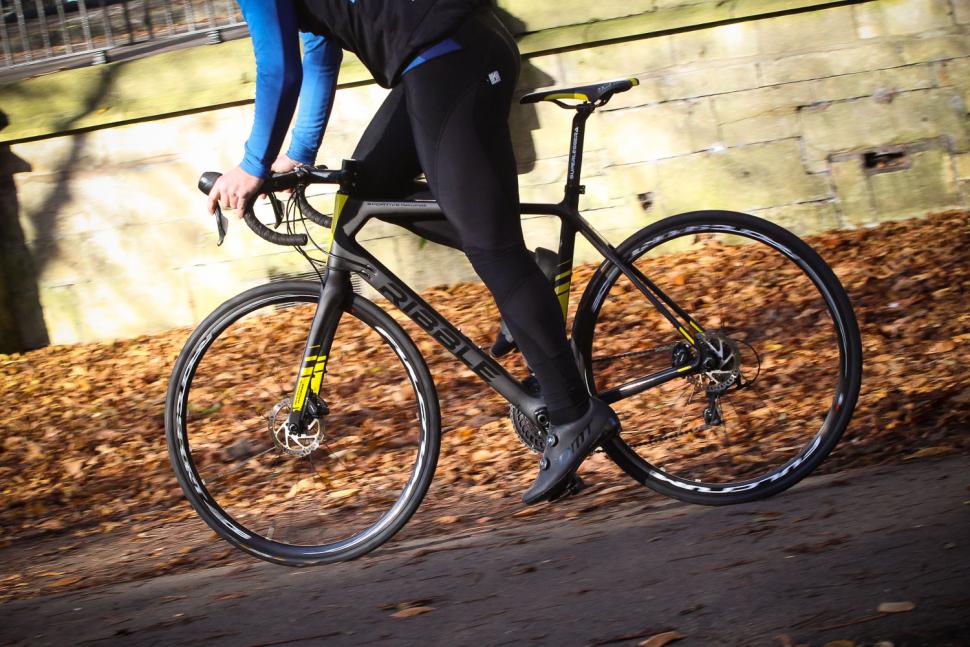
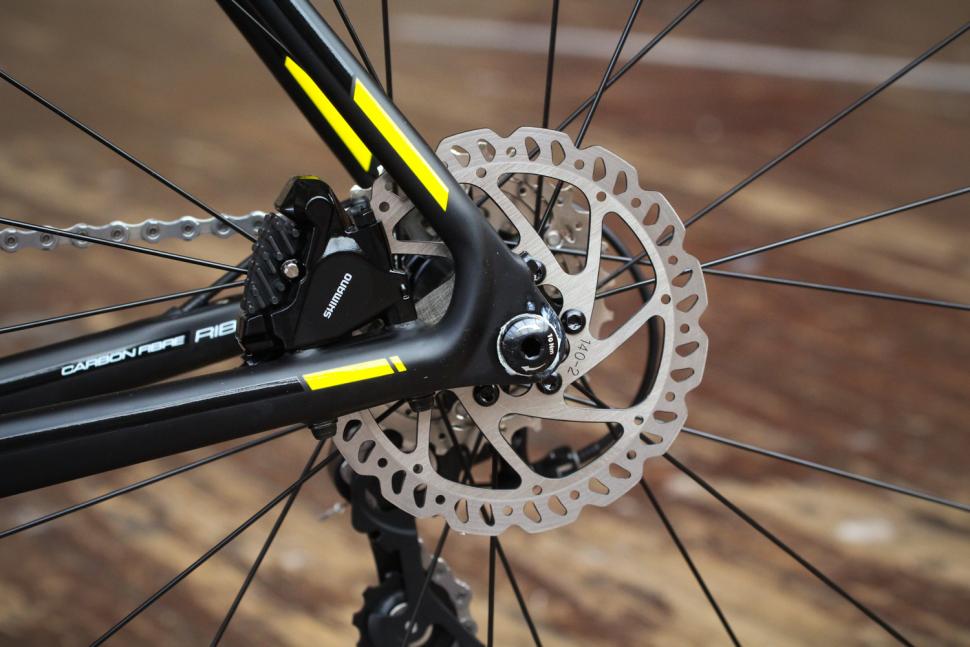
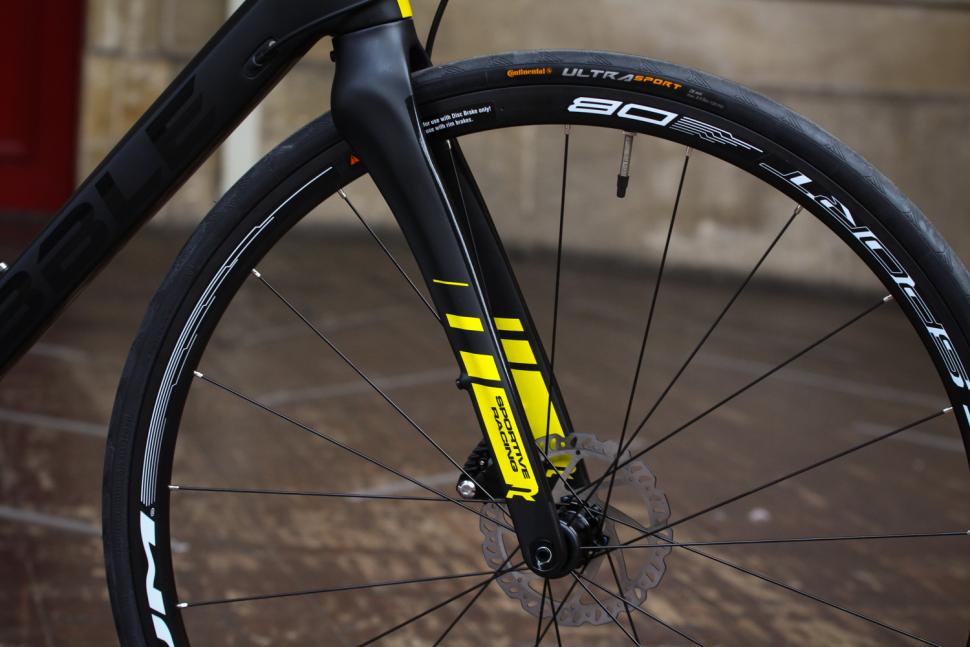

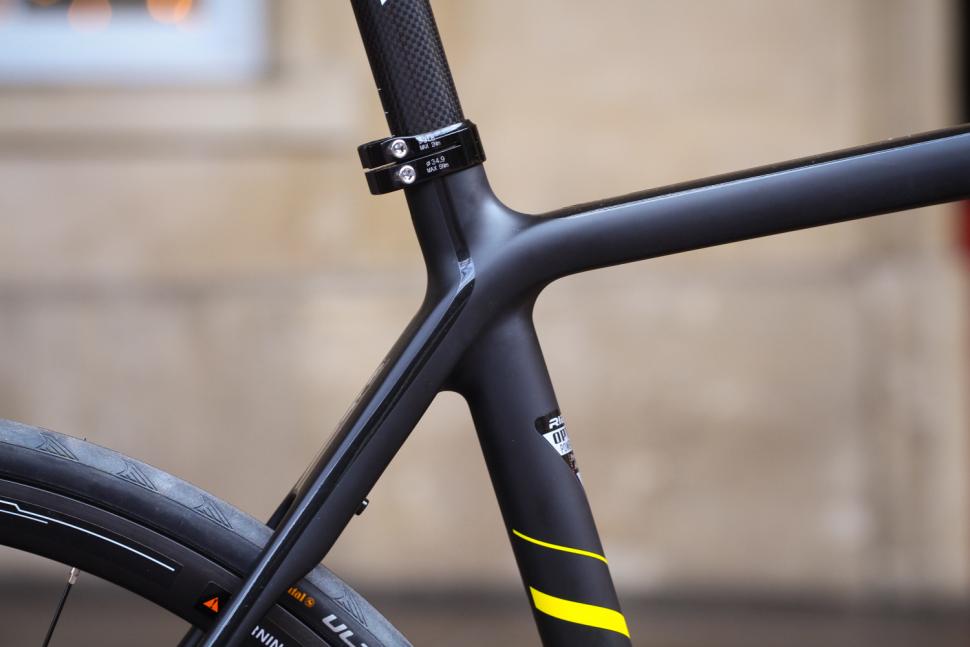
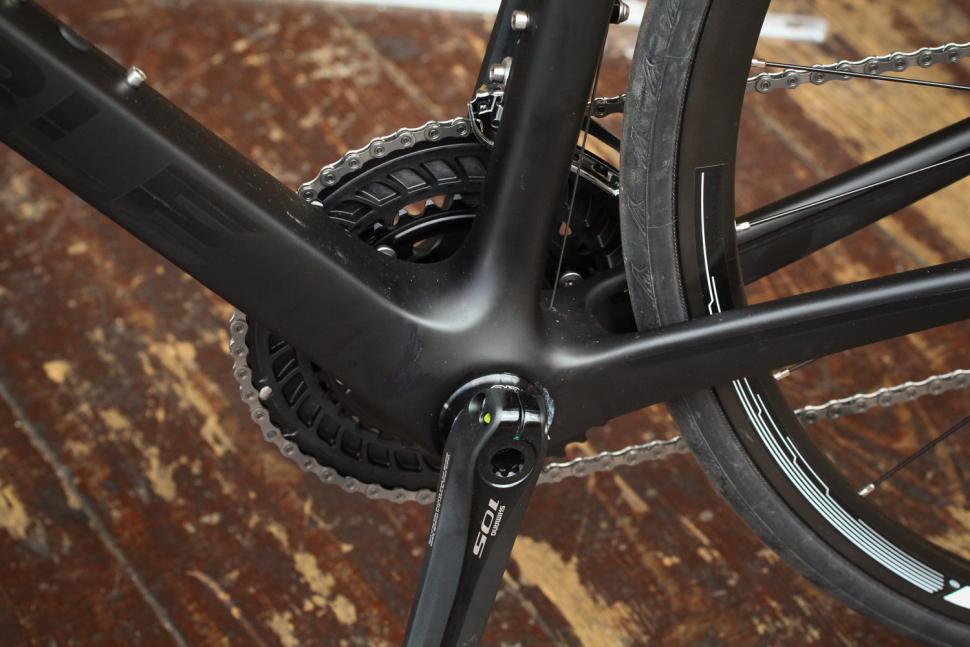

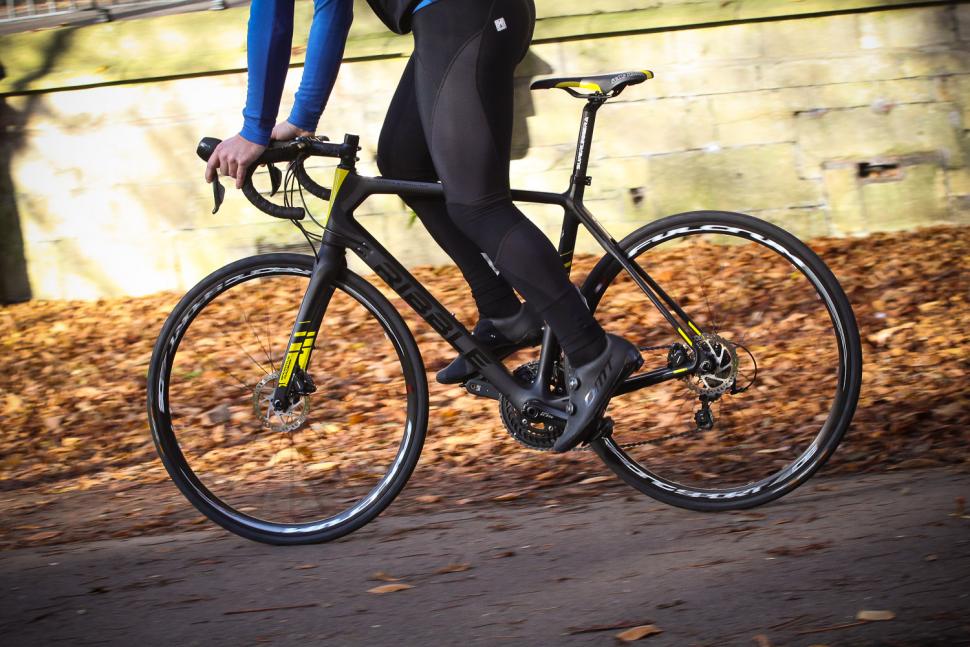
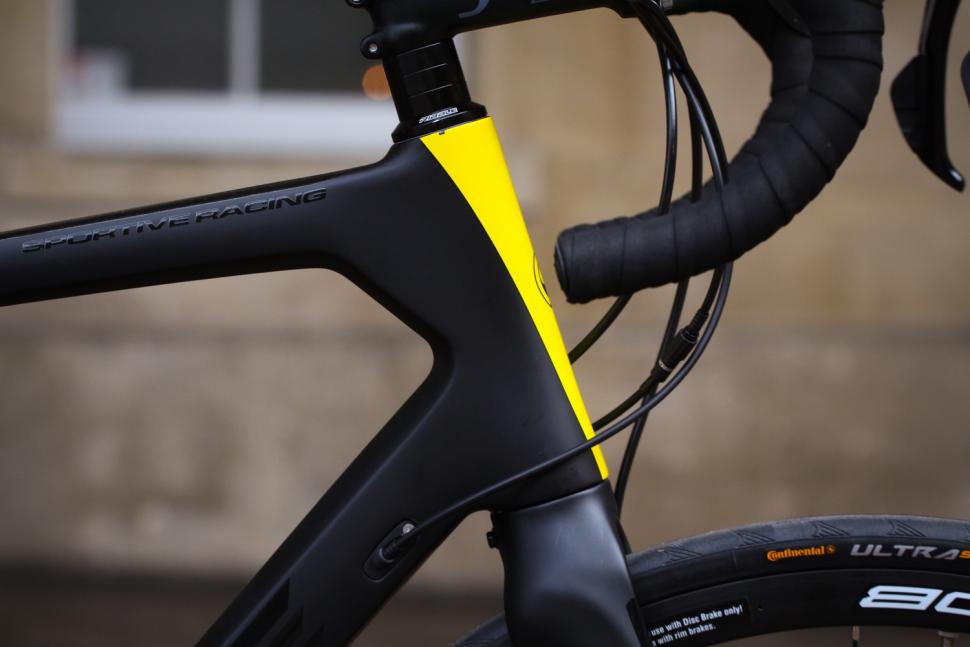
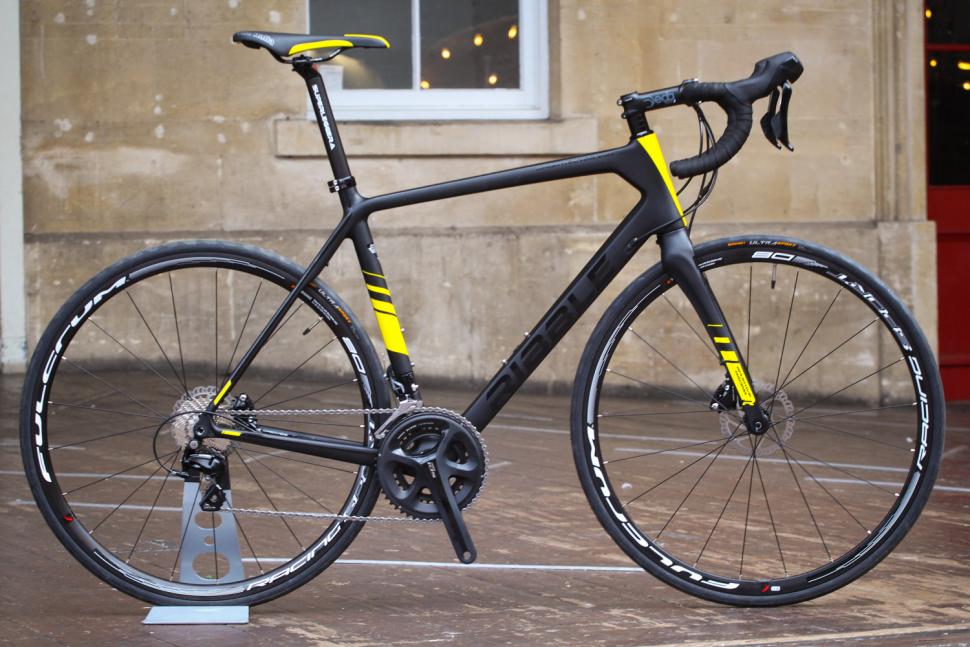

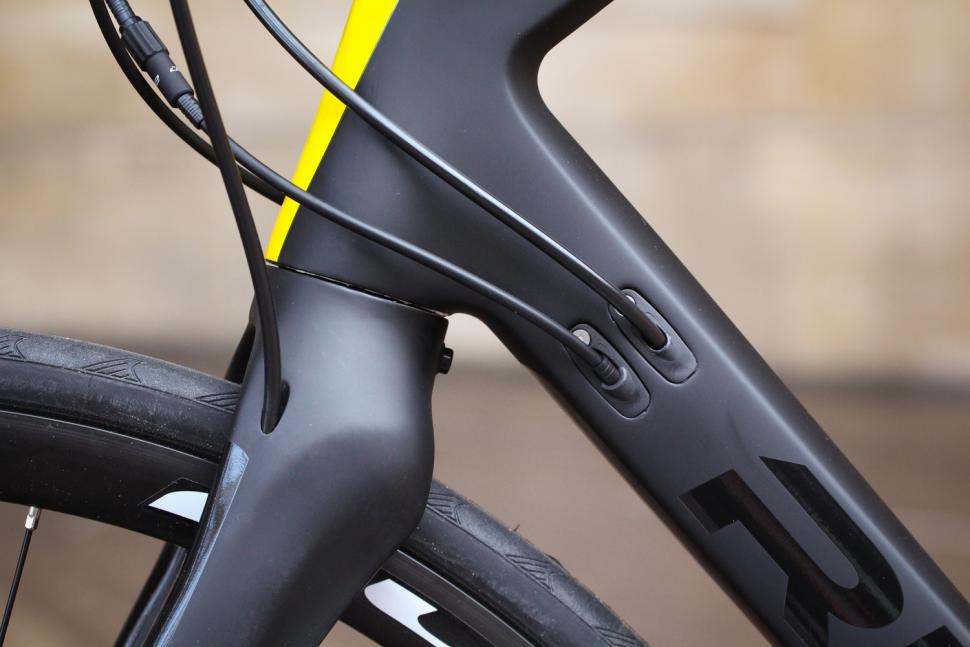



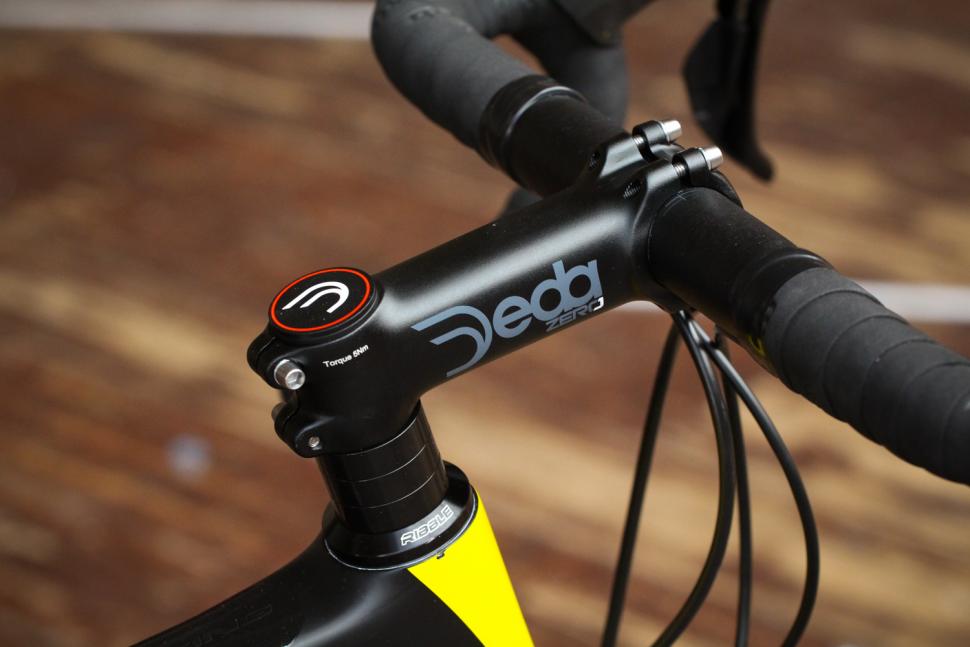
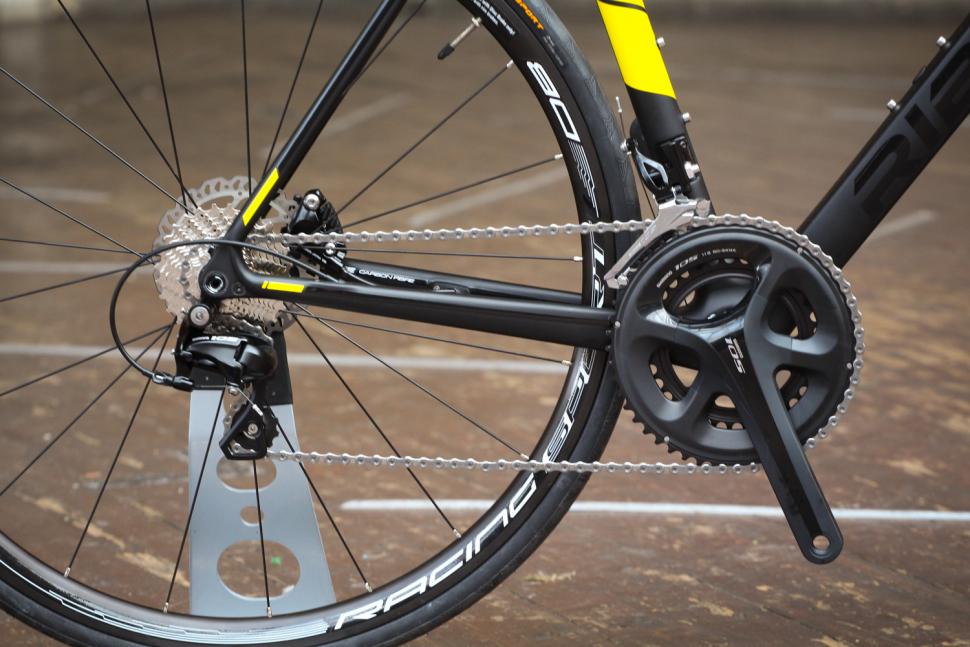
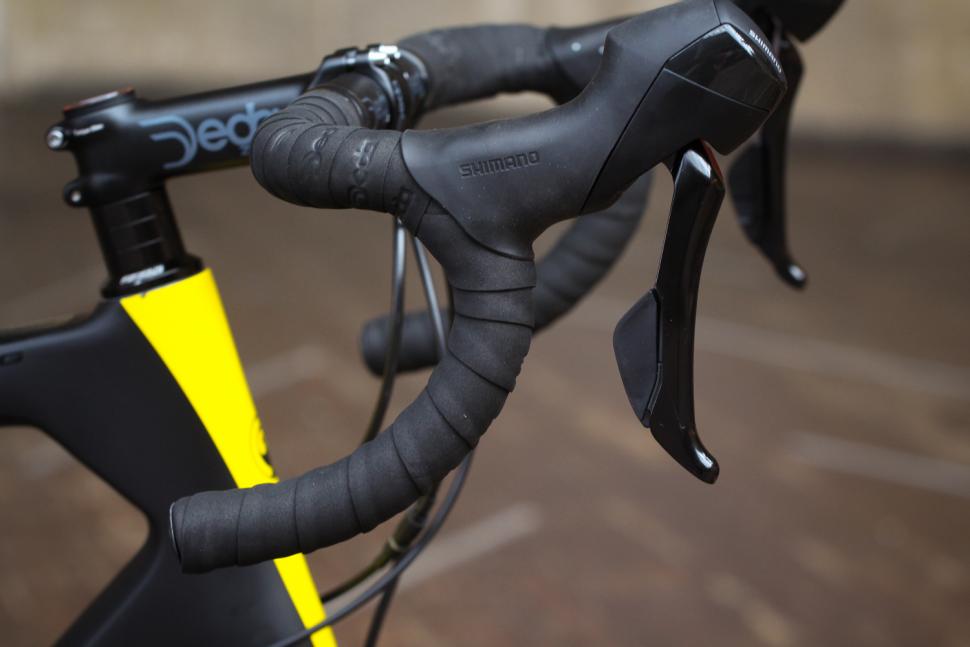

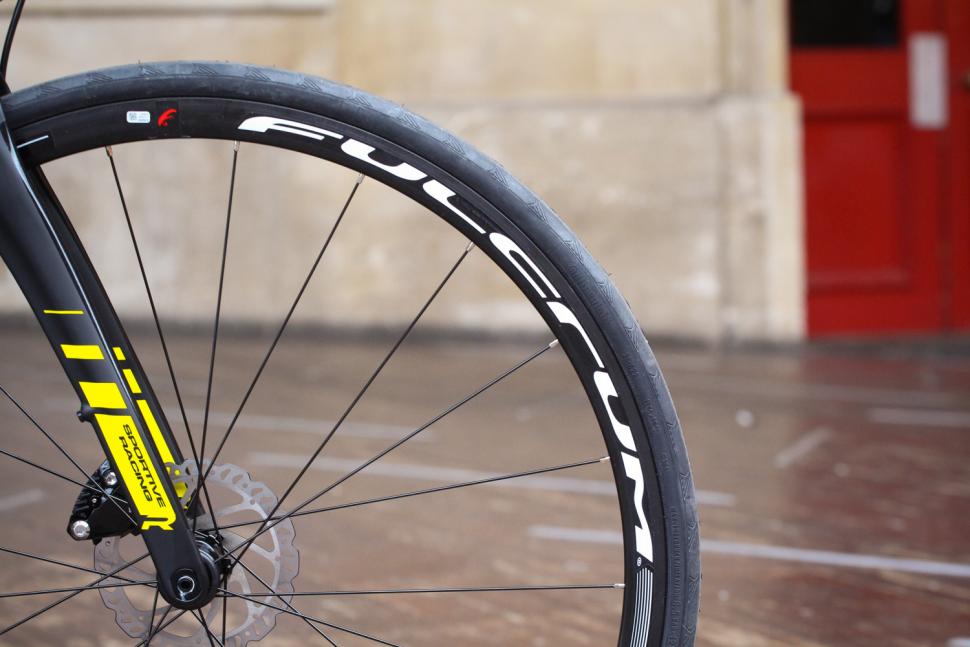
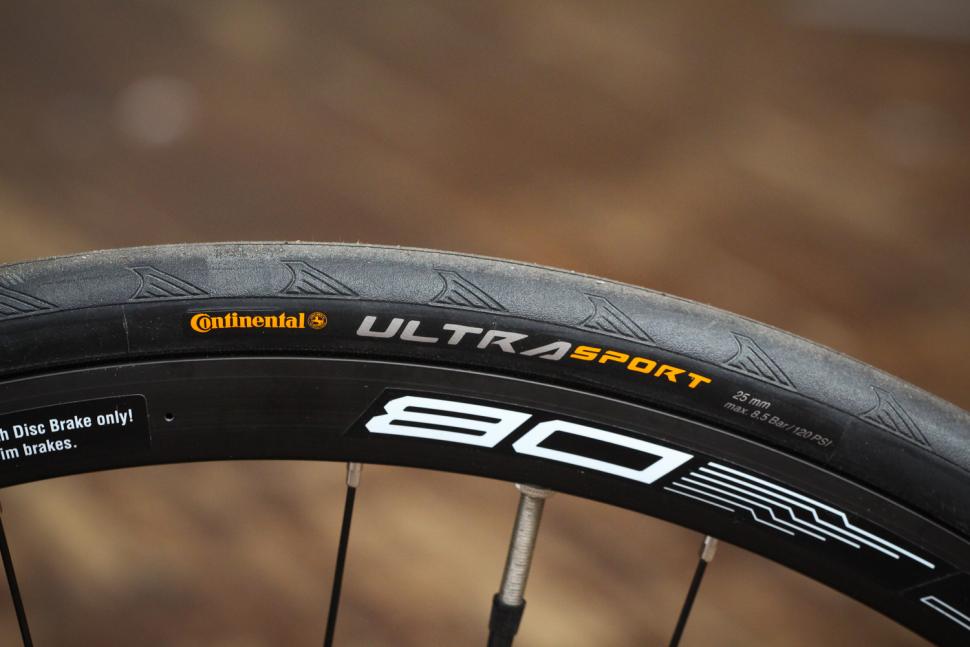
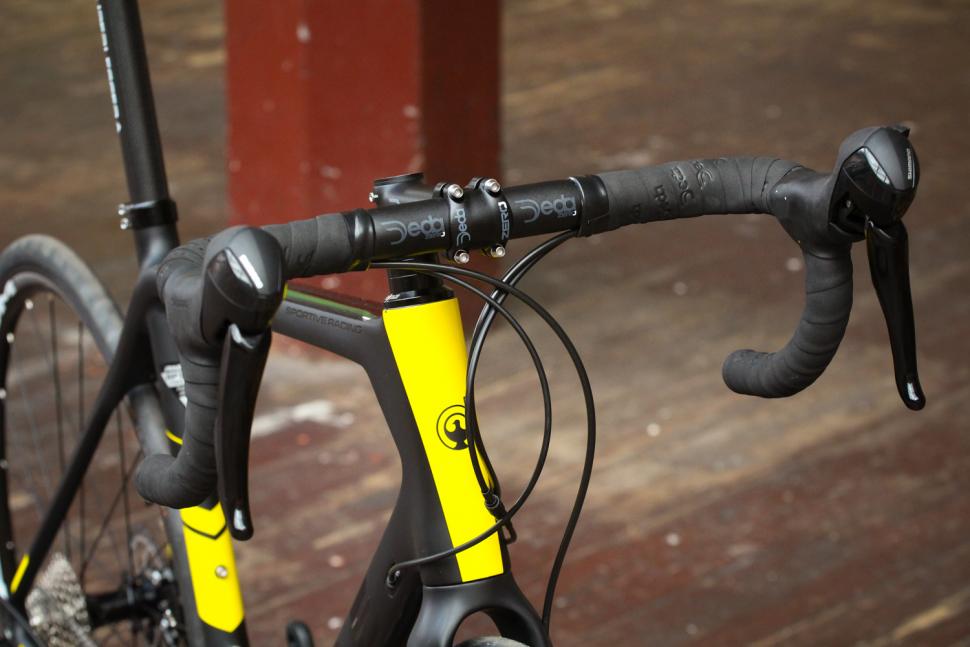




Add new comment
7 comments
I have the Ribble SR non disc version and I have to agree the ride is very hard. I find i'm squirming on the saddle after 3 hours and I've dropped the tyre pressures right down as low as I dare to try and get some comfort into the beast. I run a carbon seatpost with fizik Antares saddle which helps a little also.
I wouldn't recommend this bike to anyone. My other bike is a Giant Defy Adv 1 and there is no contest in the ride quality.
I also have a couple of Fulcrum wheels. My LG5s blew a spoke after about 300 miles and are still not true. My Racing Quattros are very firm and not that light but roll really well. I also have a set of Racing Sport Disc and they are great as winter wheels on my PX London Road. The only complaint I have about them it's there is a delay sometimes in the pickup by the free hub which is annoying.
The Ribble looks to be good value but the wheelset is best avoid in my opinion.
I have found Fulcrum Racing Sport DB to be a disaster in terms of maintenance. I had them on my winter disc bike. They're a good looking wheelset and are resonable on a weighing scales at the pricepoint. They also roll quite well and remain true on bad roads. The big issue with them is the stock bearings and the freehub design.
I went through front wheel bearings in less than 9 months of riding in good conditions (little or no wet weather use). I would suggest that the sealing on the hub isn't up to much. I've had other fulcrum wheels and several other brands which I've riden through much worse winter weather and had no issue with bearings.
Soon after that the rear wheel bearings and freehub bearings went bad. This is where the fun really began. The external most bearing in the freehub is non servicable. It's pressed in such a way during manufacture that it can't be accessed to be replaced. This means you will have to cough up the cost of a replacement Fulcrum (Campagnolo) freehub. The hub body bearings are also a non standard size which makes them harder to source. I spoke to several mechanics in multiple shops, all of them advised me to replace the freehub and then either sell the wheels or get another wheelset and keep the fulcrum's as a spare set.
I've not had a brilliant experience with my fulcrum racing 5 LG wheels, the front bearings have taken in water and muck and are now gritty but I'm leaving them alone as it's not critical at the moment. The rear bearings did the same and the free hub bearings had to be replaced as they had developed so much play that they were likely to damage the seals and the ratchet/pawl system. The inner bearing was wasy to replace and I noticed that they had used single side rubber sealed bearings (to keep resistance as low as possible I guess), and the grease they used was rubbish, no better than vaseline.
My other observation about them was that the design was flawed in that the outer freehub bearing is actually somewhere near the middle of the block resulting in a lot of leverage and twisting forces on the bearings when running in the smaller rings.
If I were to buy fulcrum wheels again I'd certainly strip them down and repack all the bearings before taking them out on the road.
One thing I find a bit strange about Ribble's disc braked bikes is that they're only available with 6 bolt rotors; there's no choice of centre lock. Proably good swap in a 160 rotor at the front for a bit more power too.
What is that Deda top cap?
It's a magnetic disc that covers the top cap and bolt assembly.
Sounds like a great contender for the ultimate commuting bike?